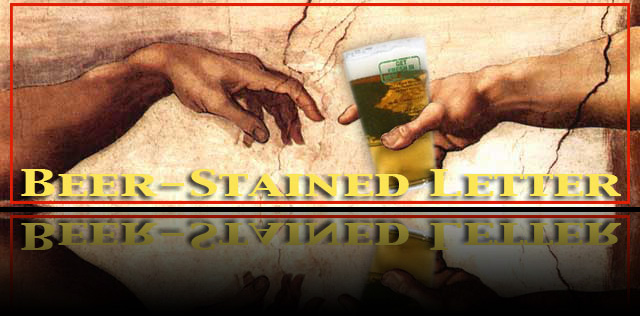A Tale of Two Cities

There’s beer. And then there’s great beer.
There’s run of the mill. And then there’s compelling.
There’s the Atlantic City Beer Festival, and then there’s the Philly Craft Beer Festival (just a week apart from each other).
Sorry to be a buzz kill, but judging from its Website, the AC beerfest -- the 2007 Celebration of the Suds (March 10th and 11th at the Convention Center) -- looks like it will be the yawner the inaugural version was last year: a frat party with a pumped up beer menu.
The inaugural Philly fest (March 3rd at the old Naval Yard), well it looks like the best bet for your hard-earned beer dollar.
Let's cut through the foam and take a look.
Suds 2.0 boasts some changes for '07. Notably, it’s now three sessions instead of the long, twin sessions that marked the two-day ’06 fest. It also claims a bigger hall at the Convention Center, so the parallel bottlenecks that choked the main aisles last year may be resolved.
But that’s just logistics. There’s a deeper ache that nags this young festival.  For instance, take the list of beers (not participating brewers, as the Website claims). It’s like browsing the import and domestic cold boxes at the big discount liquor stores. A been-there-tasted-that feel comes on. Sam Adams and a four-pack of Guinness anyone? Some Young’s? And we like those beers (ditto for a lot of the list). We even once toured Young’s brewery outside London. But notice the near absence of Jersey beers.
For instance, take the list of beers (not participating brewers, as the Website claims). It’s like browsing the import and domestic cold boxes at the big discount liquor stores. A been-there-tasted-that feel comes on. Sam Adams and a four-pack of Guinness anyone? Some Young’s? And we like those beers (ditto for a lot of the list). We even once toured Young’s brewery outside London. But notice the near absence of Jersey beers.
Now browse the lineup at the Philly Craft Beer Festival (it’s also a charity event, while AC is not). There's some overlap, sure, but Philly can claim loads of small microbreweries and brewpubs, as opposed to mostly beers from a distributor’s portfolio. And it says something that Philly landed Jersey brewers (five), while Suds 2.0, like last year, is Jersey largely by geography (an exception: The Tun Tavern, whose brewpub and restaurant stands in the Convention Center's shadow; recommendation for any AC fest-goers: do a whirlwind tasting, but settle in at the Tun Tavern for the real drinking).
We do give the AC fest appropriate points for promoting the culture of beer (and we hope they try again next year). And AC gets points for the 2006 keepsake sampling glass -- it was glass while everything these days is plastic. It’s just that this fest has the trappings of a monster truck rally or indoor motocross.
(Last year’s sideshow featured twin-sister Playboy Playmates from the 1990s. But the two sisters pouring at the Guinness booth were younger and hotter, especially the one in the halter top, pleated leather skirt and spiky boots. The Playmates were like Teri Hatcher trying to out-dazzle Sienna Miller.)
It pains us to grouse and be so brutal. We champion all things Brew Jersey. But giving folks more elbowroom to taste beers that can be had by the six at the liquor store is not value-added.
The tale of the two cities?
In Philly, the breweries and their beer are the entertainment. In AC, the beer’s just there.















